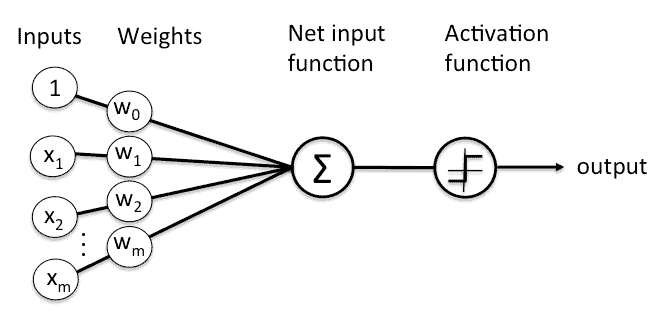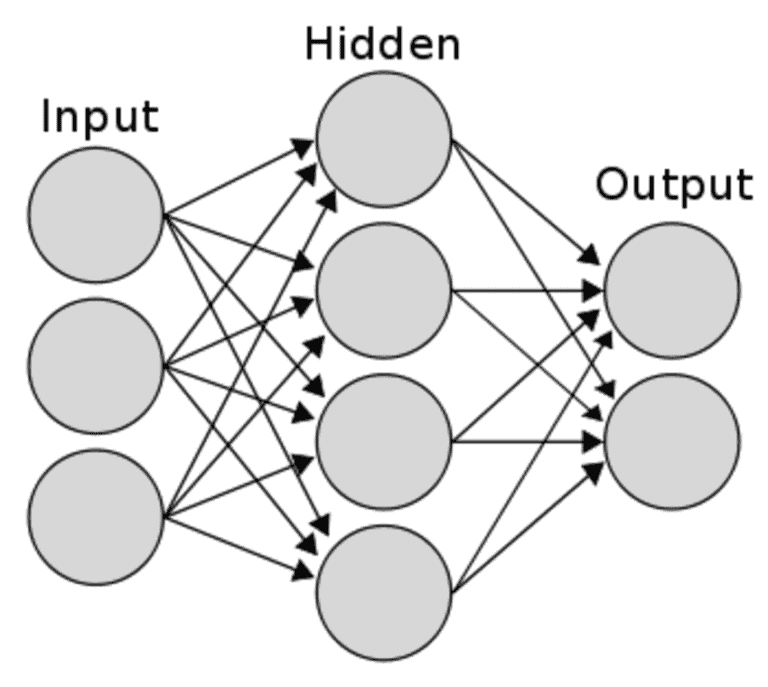1. 引言
本文将简要介绍神经网络的基本概念及其常见类型,然后重点讲解 Epoch、Iteration 和 Batch Size 之间的区别。
这些术语在深度学习中非常常见,但对初学者来说容易混淆。即使是经验丰富的开发者,也可能会在训练模型时踩坑。希望本文能帮你理清思路,避免在训练模型时出现误解。
2. 什么是神经网络?
2.1. 定义
神经网络是一组算法的组合,用于识别输入数据中的潜在模式。它通过分层处理数据,提取特征,最终完成预测或分类任务。
举个例子,我们有一组猫狗图片,希望训练一个模型能自动识别新图片是猫还是狗。这个过程类似于教小孩识别猫狗,本质上是一个分类问题。
神经网络是深度学习的核心组成部分。深度学习(Deep Learning)是一个更学术化的术语,用来描述这种数据驱动的学习方式。
常见的应用场景包括:
- 图像识别
- 自然语言处理(NLP)
- 语音识别
- 自动驾驶
- 机器人控制
2.2. 结构
神经网络由多个层(Layer)组成,每层包含多个节点(Node),每个节点负责执行计算。
一个节点接收输入向量和对应的权重,经过函数处理后输出到下一层。如下图所示是一个典型的感知机节点:

一个基本的神经网络通常由三部分组成:
- 输入层(Input Layer):接收原始数据
- 隐藏层(Hidden Layer):负责特征提取与转换
- 输出层(Output Layer):输出最终预测结果
下面是一个典型的两层神经网络结构图(输入层不计入层数):

2.3. 类型
根据数据流动方式、学习机制和记忆能力,神经网络可以分为多种类型,常见的包括:
- 前馈神经网络(Feed Forward Network)
- 循环神经网络(Recurrent Neural Network, RNN)
- 长短期记忆网络(Long Short-Term Memory, LSTM)
- 卷积神经网络(Convolutional Neural Network, CNN)
每种类型适用于不同的任务场景,选择合适的网络结构对模型性能至关重要。
3. 神经网络中的基础术语
理解以下术语对于训练神经网络至关重要:
3.1. Epoch
✅ Epoch 是指整个训练集被完整训练一次的过程。
比如,训练集中有 10 万张图片,一个 Epoch 表示模型完整地学习了这 10 万张图片一次。
⚠️ 注意:增加 Epoch 数量不一定能提高模型性能,训练过多可能导致过拟合。
3.2. Iteration
✅ Iteration 是指一个 Batch 数据训练一次的过程。
一个 Epoch 会包含多个 Iteration。Iteration 的数量 = 数据总量 / Batch Size。
3.3. Batch Size
✅ Batch Size 是指每次训练所使用的样本数量。
Batch Size 越大,训练速度越快,但对内存要求也越高。通常需要根据 GPU 显存大小进行调整。
4. 举例说明它们之间的关系
我们以“猫狗分类”为例:
- 假设训练集有 100 万张图片
- 设置 Batch Size = 50,000
那么:
- 每个 Epoch 需要 20 次 Iteration(1,000,000 ÷ 50,000 = 20)
- 每次 Iteration 处理 5 万张图片
- 如果训练 10 个 Epoch,则总共进行了 200 次 Iteration
📌 总结一句话:
一个 Epoch = 所有训练数据过一遍
一个 Iteration = 一个 Batch 的训练过程
Batch Size = 每次训练使用的样本数
5. 总结
本文介绍了神经网络的基本结构、常见类型,并重点讲解了 Epoch、Iteration 和 Batch Size 三个关键术语的区别。
理解这些术语有助于:
- 更好地设置训练参数
- 合理评估模型训练进度
- 避免在调参时踩坑
掌握这些基础概念,是深入学习深度学习模型的第一步。如果你是刚入门的开发者,建议从简单的分类任务入手,逐步理解训练流程和参数设置。